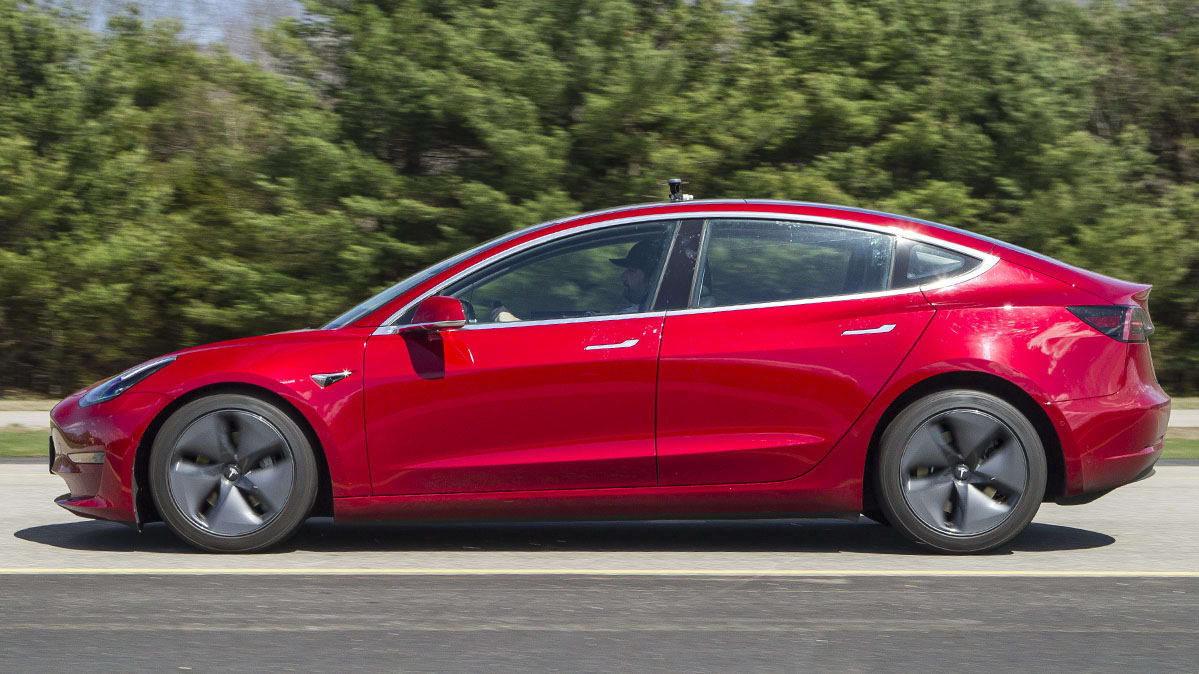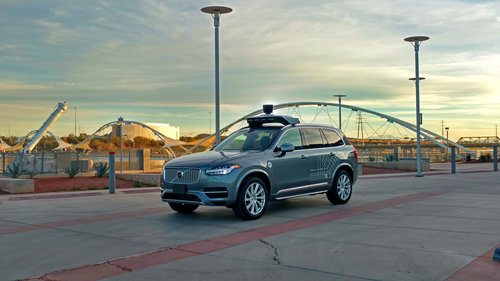Daimler Defeat Devices Doom Diesels
In Germany this week, Transport Minister Andreas Scheuer made like a middle school principal and called Daimler CEO Dieter Zietsche to his office. On Monday, he asked a sheepish Zietsche if he know how exactly five cheating devices were found in new Mercedes diesel engines. Of course Dieter claimed he had no knowledge of such a thing and that it was his classmate Martin Winterkorn over at Volkswagen who was the cheater! Well, said Principal Scheuer, he didn’t believe that, but he did believe that Daimler had put defeat devices in as many as one million recent Mercedes cars to try to skirt the Euro 6 emissions standards and that, to make things right, Dieter would have to do the equivalent of resubmitting his homework. Which in automotive terms is recalling 774,000 of their latest model diesels. All joking aside, these cars were probably designed after Volkswagen’s dieselgate scandal came to light, so just how was it Daimler thought they were going to get away with this? And how far does this dieselgate rabbit hole go? The more they cheat, the more it seems like diesel cannot be made clean and really has no future.
Tesla Drops Employees, Props Autopilot
Just one week, I’d love to go through Feedly, which is an RSS reader I use to aggregate my news and think, “oh wow, not a single notable thing about Tesla this week, I guess their 5,000 vehicle production rate is humming along smoothly.” Sadly, that was not this week and they remain the brand mentioned more than any other on my and most websites.
First, some lawsuits; one from an employee who alleges he was fired after he expressed concerns about workplace safety, and another who claims he was ousted after expressing interest in joining a union. Both are crimes, both will probably be settled to nobody’s satisfaction, and both have been denied by the company. Why cover this? Because such rumors have been floating around for a long time and the more we hear about them, the more it seems Tesla has a toxic culture of secrecy, cover-ups and anti-union sentiment, which is a problem when it comes to protecting workers’ rights and well being. Also because no other company is having this sort of problem, at least not visibly.
Then came the news that Tesla is laying off nine percent of their workforce in an effort to streamline efficiency and gain better profitability, which is to say “any profitability at all.” It sounds like the cuts will come primarily from salaried positions because they need all hands on deck for the production of their vehicles. Despite planning factories in Shanghai and Europe, Musk still claims he won’t have to raise any new capital and that the company will be profitable by the third or fourth quarter of this year, so this culling is probably critical to getting there or close.
Finally, hot on the heels of a report from the Association of British Insurers and Thatcham Research indicated that calling vehicles “autonomous” led to dangerous grey areas and driver over-reliance on technology, Tesla announced that they will begin rolling out full self-driving features this August. Details are scarce (as they are on the fact that the next Roadster will apparently have rocket thrusters), but if there’s one thing that’s certain, it’s that people are too dumb for this technology. If you hear the word “autonomous” and you immediately stop listening to anything else and immediately start thinking that cars are going to do everything for you, you should not be allowed as a passenger in a car, let alone driving. Seriously, hop on a train.
Toyota Drops Cool Bill on Grab
Any time a car maker spends a billion dollars, it’s going to get some attention, and that’s just what Toyota did this week when it took a stake in Singapore’s Grab Holdings, which is Southeast Asia’s largest car hailing service, a company that drove Uber out of their home markets. That Toyota had to spend so much to buy in indicates not only the growing value of ride sharing, but the view among car companies that they think that traditional vehicle ownership is going to be majorly disrupted by car sharing and autonomous ride hailing services. Toyota’s big cash drop means they’ll get a seat on Grab’s board of directors, which analysts say almost guarantees that Grab will start buying Toyota cars for its service. As they say, you gotta spend money to make money, and with $54 billion in cash laying around, I’d say Toyota has some they can spend! Toyota has increased partnerships and investments in a bunch of automotive disruption companies that focus on ride hailing, ride sharing, electric vehicles and autonomous cars, so they are hedging their bets that one or more of those is going to take off and they’ll be well-positioned to take advantage. Once more, Ford should be taking note of how Toyota does business before they have to kill off their entire passenger car production because they didn’t plan well enough.
Autonomous Vehicles will be SO GREAT
Even though autonomous cars aren’t very good right now, they won’t always be glorified assisted driving systems. According to a report by Security America’s Future Energy, autonomous vehicles will be so great for everyone and will lead to an incredible $796 billion in total annual benefits by 2050. This comes from congestion mitigation and economic impact as well as the totally super easy to quantify “quality of life improvements.” It also means cost cutting for taxis and truckers since those hundreds of thousands or millions of jobs will be taken over by robots, and it’s like you always hear those people who lose their jobs to robots say, “but my quality of life is so much better now that I’m unemployed.” This report is full of bogus or at the very least dubious data and projections, including safety because, as we’ve been learning lately, safety isn’t exactly guaranteed by autonomous vehicles. Maybe by 2050 they’ll have it all figured out. That’s only 32 years or so from now.
Food in Fords Making Moves in Miami
Speaking of autonomous vehicles, when Ford isn’t buying old train stations in Detroit to slap their logo on, they’re building customized Ford Transit Connects to act as Postmates food delivery vehicles in Miami. The small vans will be equipped with curbside lockers to hold food, which will be placed in the car by the restaurant after a customer places an order through the app. The food will then be taken to the customer who will receive a locker number and code to unlock the locker. Car arrives, customer gets food, and we all move on with our lives without having to make polite small talk with the delivery person while you try to decide how generous you will be with the tip. In the wake of vacating sedan and small car sales, Ford may be jumping in with both feet on this “autonomous mobility” movement sector and this pilot project could help inform systems and layout for an entirely food delivery-focused vehicle sometime in the future. I look forward to the Domino’s Transit that will cook my pizza while it’s on the way to my house. I don’t mind having to cut it because it’s not like the people at the store actually do it worth a damn anyway.
China Proves U.S. IS Not so Bad
Starting on July 1st of this year, China will be rolling out a voluntary system by which all new cars will have RFID chips placed on the windshield of vehicles, thereby allowing the Chinese government to use its dense network of surveillance technology to track you wherever you go. If you’re thinking, “well at least it’s voluntary,” starting in 2019, it won’t be anymore, and all of those 30 million or so new cars sold in the world’s largest car market every year will be equipped with these chips. China already has a number of surveillance systems, including incredible facial recognition technology, in place that use artificial intelligence to track criminals and shame people with high debts or for petty shit like jaywalking, so this is just another way of maintaining social control, and probably another way in which China can expand its incredibly creepy social rating system. While it sounds like this is yet another step on China’s journey into a dystopian nightmare, bear in mind that we all carry around cell phones equipped with RFIDs, so this could already be happening in the U.S. without your knowledge.
Dieselgate Can’t Stop Won’t Stop
Despite beginning in 2015, here we are three years later and Volkswagen is still dealing with the consequences of their diesel cheating scandal or “dieselgate.” They set aside 28.5 billion Euro to cover the sprawling fines and lawsuits stemming from their inability to make clean diesels that won’t kill us with excess carbon pollution, but just this week they were hit with another one billion euro fine from the German government for the same scandal. The Germans’ investigation was apparently much more exhaustive than the one we had here in the U.S. because it took way longer, but also resulted in lower fines. Add to this the fact that former owners of cheating diesel cars in Vermont and Arizona will receive $1,000 for the hassle of having to turn their cars back in and this thing only gets more expensive for Volkswagen. In any case, they have to be getting close to putting this whole thing behind them. Just too bad the millions of people in Europe who will likely die early from inhaling those diesel fumes won’t be able to. SAD!
Fishy Filings Could Trouble Toyota
For the last…ever, people and politicians have been saying “where are the jobs?” and this year, Toyota and Mazda came through, committing to spend $1.6 billion on a new plant in Alabama, where everyone was super happy to greet them. Well, almost everyone, because the Center for Biological Diversity has been saying for years, “what about the fish?” Specifically, the Spring Pygmy Sunfish, which is a rare species and could theoretically be driven to extinction by the construction of the factory and the various infrastructure and activities around it. In a lawsuit filed this week, the Center alleges there hasn’t been enough legal protection for the fish’s only known habitat near the factory location, and they’re hoping to get the Fish and Wildlife Service to make some special efforts to protect the important characteristics of the apparently critical habitat. All this for a small striped fish that rarely exceeds an inch in length and has already been presumed extinct twice before someone found one living somewhere. But being the relative conservationist that I am, it strikes me that it can’t be that hard to accommodate some small fish, plus what if there’s like a butterfly effect where if this fish dies, Elon Musk never colonizes mars? Talk about a disaster.
Fuel Economy Matters, but Does it Really?
A new study released this week by Consumers Union and sent to me by AllWaysDrive Blog minion Jordan revealed that, among 19 popular vehicle features, almost 1,900 drivers chose purchase cost, reliability, safety and fuel economy as their top four most important, in that order. The researchers also asked study participants which vehicle they would prefer and participants generally chose options that cost 25% more but increased reliability, safety, and fuel economy. Less important were acceleration and performance, which surely indicates that this study polled the wrong people. Setting aside the fact that the study’s sample size was relatively small compared with the total car buying public, this isn’t really reflective of reality, with the average cost of cars climbing and the average fuel economy of new cars sold actually decreasing since mid-2014 with the booming sales of SUVs and crossovers. So there’s obviously a disconnect between what consumers say they want in an ideal car and what they actually end up buying. Go figure that people can’t be trusted to tell the truth!
Cars Drivers Drive the Least
If you’ve looked on the app Autolist for a car, which I highly recommend you do, you’ve probably seen a bunch of “online only” results from a company called Carvana, which will deliver vehicles to your door in a sort of backwards dealership kind of situation. Well, they also come up with lists, apparently, and after analyzing more than 1.6 million automotive sales from January through May of this year, they’ve come up with a list of vehicles they say get driven the least each year. In the top 15, you get your regular list of high class Mercedes and BMWs that are someone’s “treat yoself” vehicle when they’re not driving their ’94 Ford Ranger back and forth to work, and the same go with the Sunday cars like the Maserati Ghibli, Lexus RC, M4 and sure, even the Volkswagen Beetle. Also on the list are the Nissan Leaf and BMW i3, which people don’t drive because of range anxiety and the Smart ForTwo which people don’t drive because it’s crap. But there are cars on the list like the Mini Cooper, VW Golf Sportwagen and Buick Encore, which are just sort of normal cars. Why are you not driving your Buick Encores, people? Is it because you’re tired of people asking “oh, that’s a Buick?” But leading the list are the Porsche 911 and Chevy Corvette, which are driven just 4,700 and 4,500 miles per year on average, which is just a crying shame because they are both some of the best cars to drive. You stupid collectors are ruining everything!
Fifth Gear Returns this Fall
After the bummer news last week that Matt LeBlanc was leaving Top Gear after his third season, we got a boost this week with the news that competing show Fifth Gear would be returning this fall, with old hosts and top blokes Tiff Needell and Jason Plato once again hosting after a three year hiatus. Fifth Gear never had the budget of Top Gear, didn’t do the crazy stunts and always focused less on the antics of three weird oldies instead of the cars themselves, which was always attractive to the real car nerds out there, even if it was a bit tougher to get the significant others interested. As I mentioned when the old Top Gear crew left for the Grand Tour, more car shows will never be a bad thing and, even if Vicki Butler-Henderson doesn’t return, I’m going to try to find a way to tune in here in the States, and so should you.
Ford Files Patent for Existing Thing
When they’re not buying train stations, delivering Miami’s to-go-orders or killing off popular vehicle models, Ford is busy filing patent applications for silly things that have existed for decades. Recently, the company applied for a patent for a screen that drops from a car’s tailgate to provide a privacy curtain. One could imagine this being especially handy at the beach for changing out of a swimsuit before hopping back into the car or for doing your business while out in the woods or when overcome with a sudden case of bowel evacuation syndrome because you ate curry for lunch and you knew it was risky but decided dammit, Darryl, just go for it. In any case, these screens have been around for years and you can buy them on Amazon if you’re the type of person who chooses not to think about if someone could just look through the windshield and see you despite the privacy curtain. The difference here is that they will apparently be built into the tailgate instead of being an add-on you purchase separately. There’s also a variant that deploys into an awning, basically giving you a shady spot to sit behind your car on sunny days. Plus, with the fact that the Mustang will be the only Ford vehicle without a hatchback or tailgate, this means they could apply it to almost every single car in their U.S. lineup! Hooray for small victories?
Infrastructure, Now with Stuffed Crust
After so many campaign promises by so many politicians to address the country’s crumbling infrastructure, we are finally starting to see some progress being made. Oh, wait, did you think the government was doing something? Oh, no, sorry. We can’t even get a coherent trade policy. The entity currently working on restoring our roads is actually Domino’s Pizza. Under the guise of creating a smoother ride for their delivery vehicles so our pizzas don’t arrive in a jumbled mess, Domino’s is fixing potholes from California to Texas to Delaware and, after paving over the road canyons, painting them with a very tasteful Domino’s logo and their tagline, “Oh yes we did.” Yes, this is a publicity stunt and yes it’s working but hell no, I don’t mind driving over Domino’s logos in the streets instead of feeling the jarring crash of a six-inch deep pothole and wondering if my wheel has bent so much I won’t make it home. Oh yes you did, Domino’s, because oh no, our elected officials can’t.
Authored by
Devlin Riggs








































































